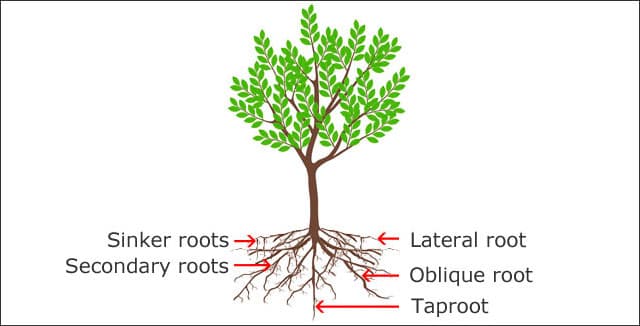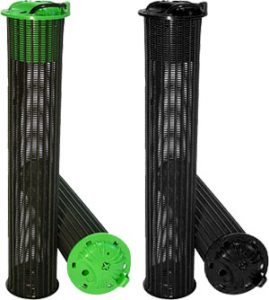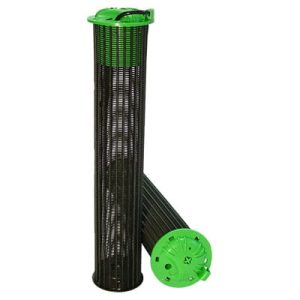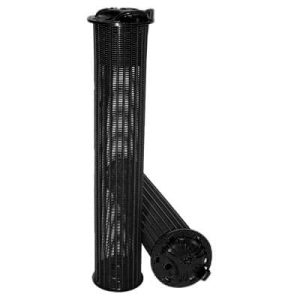
Trees With The Strongest and Deepest Roots

Have you ever had to cut a tree down because the tree roots were damaging your septic field, your foundation, or your sewer connection?
The strength and persistence of tree roots is no joke.
Did you know trees can grow their roots through rock? It’s true! Rather than try to grow around a rock, a tree will go right through, over time.
It only stands to reason that a tree planted in the wrong place will wreak havoc on man made structures.
On the other hand, the beauty and utility of trees are unsurpassed. If you live on an oak-lined street you know these are the most coveted neighborhoods.
They act as windbreaks in the winter and shade your house in the summer to drive down energy costs. And they look beautiful while doing it.
You don’t want a tree that’s going to topple over in high winds, which means you do want trees with a robust root system.
So, how can you avoid introducing destruction to your house when you plant an ornamental tree?
Looking to improve the health and growth rate of your trees’ roots? Shop our deep root aeration products.
Tree Roots 101
The growth of tree roots is all about the search for nutrients and the support of the tree’s canopy.
If either one of these missions fails, the tree is much more likely to die. Large trees have an even more significant substructure: primary roots that are perennial and secondary roots that grow in waves as the canopy is expanding.
Permanent Roots
The first root to grow of the primary roots is called the taproot, and it emerges as a radicle from a germinated seed. The taproot continues to grow as the tree matures.
Not all trees grow deep taproots, especially if adequate nutrients are to be found close to the surface.
Some trees have evolved the ability to grow very deep and robust taproots to find a deeper water table and withstand drought conditions.
The most deep-seated taproot ever recorded was found on a wild fig tree in Echo Caves, near Ohrigstad, Transvaal, South Africa. It measured almost 400 feet deep.
This is not an exhaustive list; however, here are some of the most popular trees that grow the deepest taproots:
- White oak
- Walnut tree
- Hickories
- Black gum
- Sassafras
- Sweet gum
- Japanese Pagoda
- Butternut
- Pines
- Hornbeam
Trees will show very little visible growth in their first years of life as their taproots are growing down. However, this isn’t all they are doing.
Trees must spend their energy developing a diverse root system. In some trees, the taproot will only end up being about 3 feet deep, while the other roots, which grow out of the taproot, grow much further out and down.
These roots are called:
- Oblique Roots (Heart Roots)
- Lateral Roots
- Sinker Roots, and
- Secondary Roots or Fine Roots

Oblique Roots (Heart Roots)
Heart roots grow from the base of the trunk and may be visible there. They are primary roots which grow multiple secondary roots in search for water.
They also grow down. Red oaks and sycamore trees have thick secondary roots.
Lateral Roots
Lateral roots are un-tapered, rope-like roots that grow outward and form a network to support the tree. These are the roots most common and abundant in many species.
In addition, they are the roots most likely to break up the sidewalk and to be damaged by lawnmowers.
Sinker Roots
Sinker roots are much smaller roots which grow straight down from the lateral root system to find nutrients. Some species of trees, like weeping willows, eastern cottonwood, and golden bamboo, have very aggressive lateral root systems. They produce a high volume of these roots.
Secondary Roots – Fine Roots
Lastly, there are many thousands of fine roots. This vast network of roots less than 2 millimeters in diameter grow and die off in waves as the tree matures.
Their mission is to cover a large surface area for the most nutrient absorption. Most of them will die off eventually and be replaced. However, some of them will grow into lateral roots.
Most of a tree’s roots, including its taproot and heart roots, grow in the top three feet of soil and spread much wider than the drip line (the imaginary line marking where water drips from the leaves of the tree.
However, the growth pattern is affected by drought and soil conditions. If the soil is sandy or the water table is low, trees will grow deep taproots.
Where the ground is full of clay or the water table is high, even oak trees will grow shallower roots and more of them.
Pros & Cons of Planting Trees in Your Yard
Now that you know how tree roots work and where they are likely to spread let’s go over some pros and cons of planting trees in your yard.
As you look at these lists above, note the trees with the strongest and deepest root systems. They are also some of the most towering trees and may not be suitable for every yard.
If you don’t have space for your tree’s roots to grow adequately, you will always be fighting the root system and potentially damaging the tree. That is a big con.
You need at least 20 feet of clearance for trees that will grow larger than 70 feet, and 15 feet for trees up to 70 feet. Trees which grow up to 30 feet will need 8-10 feet of clearance away from your house.
Trees may also be attracted to leaking pipes buried under your yard. Sometimes an old pipe system and a big, old tree create a lethal combination.
No matter what type of tree you have, they will grow down, laterally, and horizontally so you have to be aware of this before planting.
Trees can also be a host for pests you don’t want near your house, like termites and rodents. Some pests can use tree limbs to get access to open vents and windows in your home.
The good thing about trees is that the good outweighs the bad. Of course, trees offer privacy, beauty and a home for birds and squirrels we love to watch from our windows.
They lower our energy bills by providing shelter for our houses from the weather. Additionally, they change through the seasons, offering new beauty all the time. Lastly, most trees are relatively maintenance-free if they are planted in a good spot.
Takeaway

Rootwell Pro-318 Deep Root Watering System
When making the decision on planting trees in your yard, it is important to consider tree roots and give them enough space to grow.
It is also critical that you provide your trees with nutrients to thrive in your yard.
To ensure that your trees receive the oxygen, nutrients, and water deep in the root system, install a deep root system.
The Rootwell Pro-318 is a patented porous cylinder is a three-in-one system promoting healthier tree root systems providing long-term benefits for years to follow.




In 93023, (Ojai,California) which bush/tree makes an impenetrable hedge line and is drought tollerant?
I live in 3bed semi. We have heavy London clay throughout. The heaviest is at the bottom 50-60′ from house. I planted weeping willow 5 ?years ago which has been growing rapidly to break down the hard clay. Neighbour’s house wall is 5m across from the tree. She says the tree is threatening her house but refuses to have survey done I demanded. I am not against the removal but need to know where the roots grow. There is no evidence on the surface.
I must replace with another tree. Is every Rowan suitable or maple or acer? Or any other?
Thanks. Barbara Rehmann